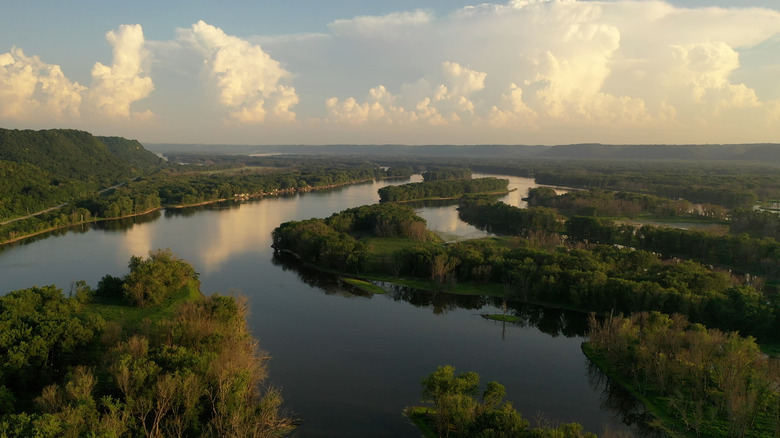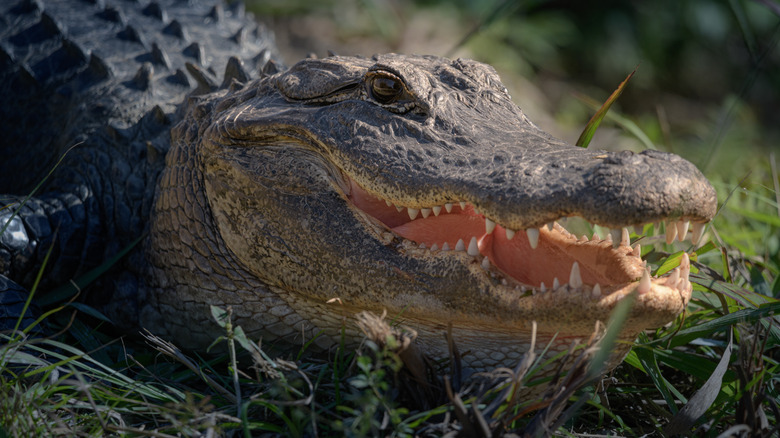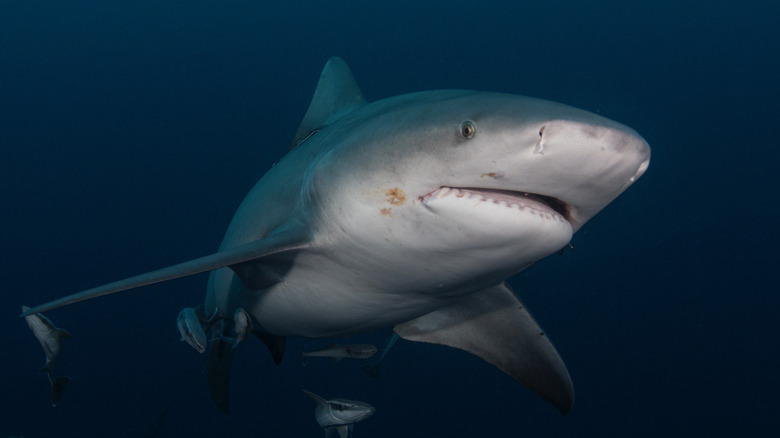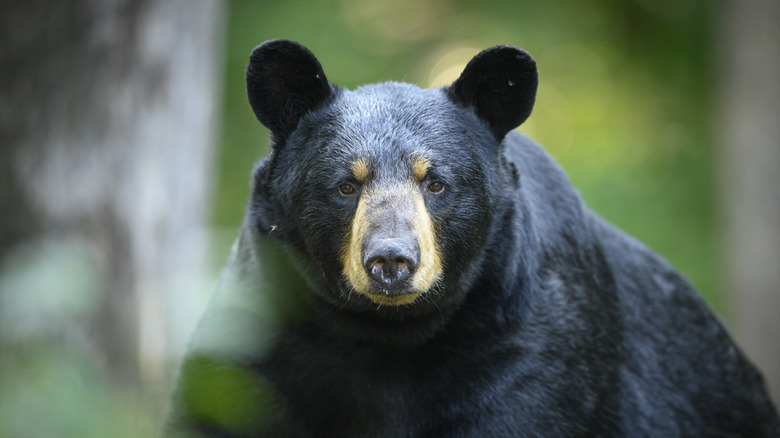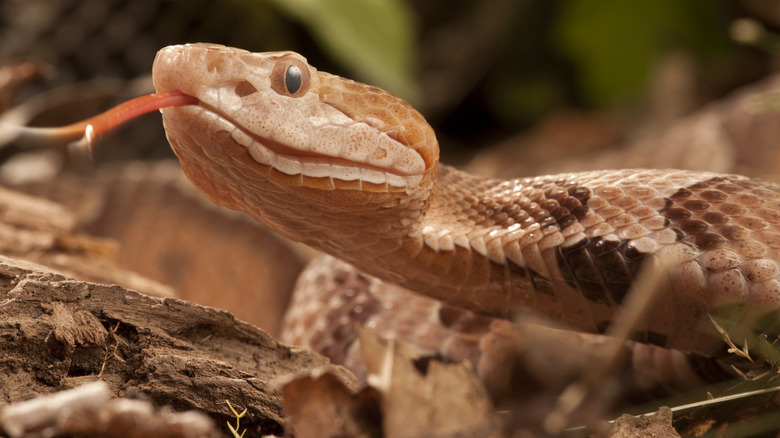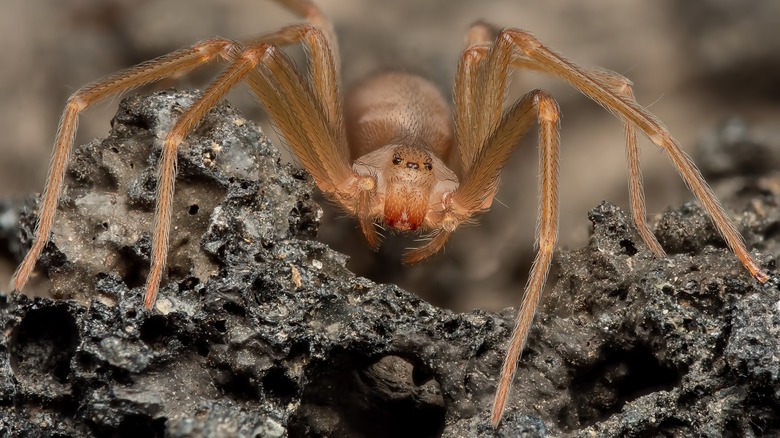5 Creatures To Beware Of When Adventuring Along The Mississippi River
The Mississippi is the second largest river in the United States. It nearly bisects the entire continental U.S., beginning in Lake Itasca, just 120 miles below of the Canadian border in Minnesota, before winding its way 2,350 miles southward through the American Midwest and emptying in the Gulf of Mexico. Its length is only exceeded by one of the rivers which drains into it, the Missouri. Along its way to the Gulf, the Mississippi River passes through 10 states. Collectively, the Mississippi and its connecting rivers drain more than 40% of the United States.
The uniqueness of the river's route from north to south has made the roadway that runs alongside it, nicknamed the Great River Road, one of the most popular road trips in America. Given that this river crosses so many geographical regions, it only stands to reason there is a myriad of outdoor adventures to be had along its length. As a result, outdoor enthusiasts can be found exploring every portion of the river. However, given its size and area it covers, it also makes sense that there are a number of creatures to beware of when adventuring along the Mississippi River. This includes creatures both in the water and on the land the river cuts through.
Alligators may be increasing their range along the Mississippi River
Although alligators typically are only found in three of the 10 states along the path of the Mississippi River –- Arkansas, Louisiana, and Mississippi –- these states have some of the most alligator infested waters in the U.S. In fact, they are so prevalent that both Louisiana and Mississippi have designated the alligator as their official state reptile. The density of these animals along these states bordering the Gulf of Mexico makes it the top creature to beware of when adventuring along the Gulf Coast.
However, although its historical range is restricted to the lower third of the river's length, recent years have seen some confirmed sightings much further up river. States such as Missouri and Illinois have had multiple animals removed from public places over the past decade. Incidents in Missouri have actually been increasing even faster in recent years.
Whenever you are in an area inhabited by alligators, there are some safety tips to follow. Most often, alligators will be found along the water's edge -– usually in areas of dense vegetation. Keep pets on a leash and do not get in the water except during daylight hours and along areas of clear shorelines. Additionally, never try to feed or taunt an alligator should you see one.
Many dangerous fish swim in the Mississippi River
The Mississippi River is home to a number of dangerous freshwater fish. Some of the largest fish, such as catfish, sturgeon, and paddlefish, can weigh over 100 pounds, but really pose no threat to humans except for a freak accident such as being hit or bumped by one. More recently, a smaller fish, the silver carp, has invaded the middle and upper portions of the river. Their habit of jumping out of the water when startled has resulted in numerous injuries to boaters, water skiers, and fishermen.
There are, however, a pair of species swimming in the Mississippi with impressive dentures and a tendency to bite. The most common of these is the alligator gar. These prehistoric-looking fish were once common along the entire length of the river. However, today they are most commonly found along the lower two-thirds. Alligator gar are the largest gar in the United States, capable of growing 10 feet long and up to 350 pounds. While there are reports of people being accidentally bitten or struck by alligator gar, in general, they are not aggressive toward people and there are no official records of attacks on humans.
Alligator gar are the most common large predator fish in the Mississippi, but bull sharks are the most notorious. Make no mistake, bull sharks are in the river. However, while they are not common except on the lower portion of the river, they have been found as far up as Illinois. While those instances certainly prove these dangerous sharks can make their way far up the river system, they really aren't much of a concern outside the river portions bordering Louisiana and Mississippi.
Black bears are found along most of the river
Historically, black bears were found throughout all of the Continental United States, including the entire length of the Mississippi River Valley. Today, they are most common in the northern and southern portions, with established populations in eight of the 10 states bordering the river. However, recent years have seen a dramatic increase in the number of confirmed sightings in the other two – Iowa and Illinois. Not only have the bears been increasing in numbers on both sides of the river, but by tracking tagged animals, biologists have now been able to show a number of bears actually crossing the river — even at some of its widest points.
With that in mind, it's a good idea to assume that anytime you are adventuring along the Mississippi River, you are in the presence of these potentially dangerous bears. However, if you are in the areas of the heaviest bear populations –- Louisiana, Minnesota, Mississippi, Missouri, and Wisconsin — you should take precautions to avoid bears and know what to do if you encounter one. As is the case anytime you are in bear country, it is also a good idea to carry bear spray and know how to use it. If you are staying overnight, be sure to avoid mistakes that attract bears to your campsite.
Venomous snakes can be spotted along the river's route
There are dangerous snakes found both in the water and on the adjacent land throughout the entire length of the Mississippi River. In fact, the three most dangerous pit vipers in North America are all present on some portion of the river's route.
Water moccasins, also known as cottonmouths, are present throughout the southern half of the river. These semi-aquatic serpents can be aggressive if provoked and pack a particularly potent venom. They are also often confused with non-venomous water snakes, which inhabit the area, as well.
There are two land dwelling vipers that are found along the Mississippi River, as well. The copperhead actually bites more people each year than any other venomous snake in the U.S. It is found in all but the two northernmost states along the Mississippi. Timber rattlesnakes, on the other hand, are found in every single state along the Mississippi River, so it's a good idea to know what to do if you encounter a rattlesnake while adventuring in this region. Both copperheads and timber rattlers are most commonly found hiding among rocks, leaves, or fallen limbs. It is best to give each of these dangerous snakes plenty of room if you encounter one.
Keep an eye out for black widow and brown recluse spiders
While they may not appear as menacing as the other creatures on this list, there are a pair of dangerous spiders found along much of the Mississippi River that pose just as great a danger to humans. Black widows, perhaps the most infamous venomous spiders in North America, are easily identified by the red hourglass shape on their abdomen. At least one variety of this dangerous spider is found in all of the states along the Mississippi River.
Brown recluse, also known as the violin spider, is not as widespread as the black widow, but still has potent venom. Currently, brown recluse spiders have established populations in all but the northernmost two states along the Mississippi. Therefore, anyone adventuring along the Mississippi River outside of Minnesota or Wisconsin needs to keep an eye out for these arachnids. They can be identified by their distinctive V shape on their backs, as well as six eyes, as opposed to the eight found on most spiders.
Being bitten by these venomous spiders can result in a variety of symptoms such as chills, fever, nausea, vomiting, or difficulty breathing. According to the Center for Disease Control, neither of these venomous spiders is aggressive towards humans. However, bites are common and require immediate medical attention.
